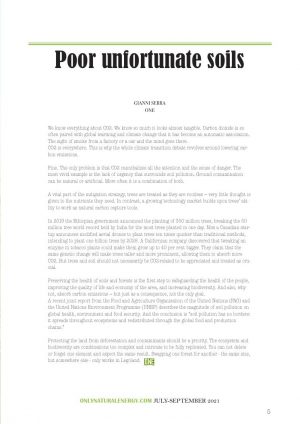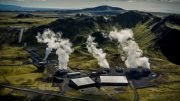 We know everything about CO2. We know so much it looks almost tangible. Carbon dioxide is so often paired with global warming and climate change that it has become an automatic association. The sight of smoke from a factory or a car and the mind goes there.
We know everything about CO2. We know so much it looks almost tangible. Carbon dioxide is so often paired with global warming and climate change that it has become an automatic association. The sight of smoke from a factory or a car and the mind goes there.
CO2 is everywhere. This is why the whole climate transition debate revolves around lowering carbon emissions.
Fine. The only problem is that CO2 cannibalizes all the attention and the sense of danger. The most vivid example is the lack of urgency that surrounds soil pollution. Ground contamination can be natural or artificial. More often it is a combination of both.
A vital part of the mitigation strategy, trees are treated as they are rootless — very little thought is given to the nutrients they need. In contrast, a growing technology market builds upon trees’ ability to work as natural carbon capture tools.
In 2019 the Ethiopian government announced the planting of 350 million trees, breaking the 50 million tree world record held by India for the most trees planted in one day. Now a Canadian startup announces modified aerial drones to plant trees ten times quicker than traditional methods, intending to plant one billion trees by 2028. A Californian company discovered that tweaking an enzyme in tobacco plants could make them grow up to 40 per cent bigger. They claim that the same genetic change will make trees taller and more prominent, allowing them to absorb more CO2. But trees and soil should not necessarily be CO2-related to be appreciated and treated as crucial.
Preserving the health of soils and forests is the first step to safeguarding the health of the people, improving the quality of life and economy of the area, and increasing biodiversity. And also, why not, absorb carbon emissions — but just as a consequence, not the only goal.
A recent joint report from the Food and Agriculture Organisation of the United Nations (FAO) and the United Nations Environment Programme (UNEP) describes the magnitude of soil pollution on global health, environment and food security. And the conclusion is “soil pollution has no borders: it spreads throughout ecosystems and redistributed through the global food and production chains.”
Protecting the land from deforestation and contaminants should be a priority. The ecosystem and biodiversity are combinations too complex and intricate to be fully replicated. You can not delete or forget one element and expect the same result. Swapping one forest for another – the same size, but somewhere else – only works in Legoland.
Gianni Serra





